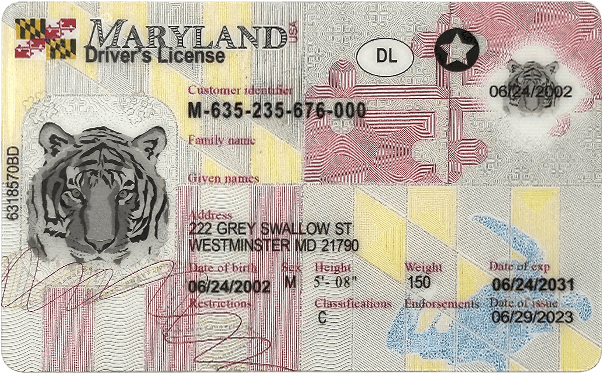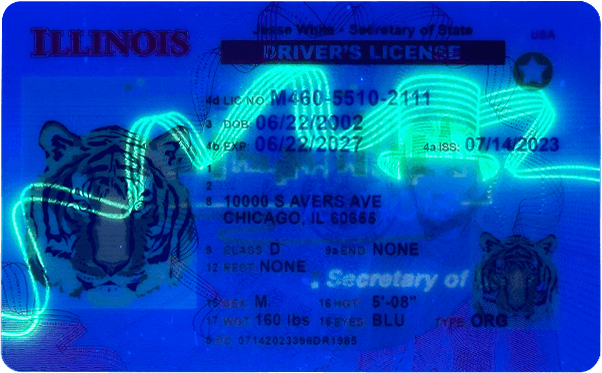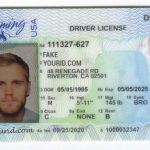Introduction
When it comes to the insurance industry, the verification of a policy – holder’s driving license is of utmost importance. A fake driver’s license can pose significant risks to insurance companies, as it may lead to fraudulent claims and an increase in the overall cost of insurance for all policy – holders. Insurance companies have developed a variety of methods to investigate suspected fake driver’s licenses to safeguard their interests and maintain the integrity of the insurance system.
Initial Checks and Documentation Review
When an insurance company suspects a fake driver’s license, the first step is often a thorough review of the submitted documentation. They will closely examine the license itself for any obvious signs of forgery. This includes checking the quality of the paper, the printing, and the security features.
Most modern driver’s licenses have several security features such as holograms, microprinting, and UV – reactive inks. Insurance company staff are trained to recognize these features and look for any discrepancies. For example, a poorly – printed hologram or missing microprinting can be a red flag. In addition, they will check the expiration date, the personal information on the license (such as name, date of birth, and address) against other records provided by the applicant, such as their application form or identity documents.

Database Cross – Referencing
Insurance companies have access to various databases that can help in the investigation. One of the most important is the state or national motor vehicle department databases. These databases contain official records of all valid driver’s licenses issued in a particular jurisdiction.
When a suspected fake license is reported, the insurance company will cross – reference the license number, name, and other details with the information in the motor vehicle department database. If the license number does not match the records, or if the details provided on the license do not correspond to the official records, it is a strong indication that the license may be fake. Some insurance companies also have access to third – party databases that aggregate driver – related information from multiple sources, which can provide additional verification.
Interviews and Background Checks
In addition to document and database checks, insurance companies may conduct interviews with the policy – holder or applicant. During these interviews, they will ask detailed questions about the driver’s license, such as when and where it was issued, and any experiences related to obtaining or using the license.

The tone and consistency of the applicant’s answers can be crucial. If the applicant is evasive, provides inconsistent information, or seems unfamiliar with basic details about their own license, it can raise further suspicion. Insurance companies may also conduct background checks on the applicant, which can include checking their criminal records. A history of fraud or forgery can be a strong indicator that the driver’s license may be fake.
Collaboration with Law Enforcement
In some cases, when the suspicion of a fake driver’s license is high, insurance companies may collaborate with law enforcement agencies. Law enforcement has more extensive resources and legal authority to investigate forgery and fraud cases.
Insurance companies can provide law enforcement with the evidence they have gathered, such as the suspected fake license and the results of their internal investigations. Law enforcement can then use their own methods, such as forensic analysis of the license, to determine if it is indeed fake. They can also conduct further investigations into the applicant’s activities and associations to uncover any broader fraud schemes.

Advanced Forensic Techniques
Forensic document examiners may be called in to analyze the suspected fake driver’s license. These experts use a variety of advanced techniques to determine the authenticity of the document.
Microscopic analysis can be used to examine the paper fibers, the quality of the ink, and the printing process. Chemical analysis can help identify the types of inks and other materials used in the license. Digital forensics may also be employed if the license has any digital components or if it is suspected that the information on the license has been digitally altered. These forensic techniques can provide conclusive evidence about the authenticity of the driver’s license.
Common Problems and Solutions
- Problem: Difficulty in Identifying Subtle Forgery
Some forgers are becoming more sophisticated, creating fake driver’s licenses that have very subtle signs of forgery. These can be difficult to detect during a routine initial check.
Solution: Insurance companies should invest in continuous training for their staff to keep them updated on the latest forgery techniques and security features of driver’s licenses. They can also establish a second – level review process for licenses that are highly suspect but do not have obvious signs of forgery. This second – level review can involve more experienced staff or even forensic experts.
- Problem: Incomplete or Inaccurate Database Information
Motor vehicle department databases may have errors or may not be fully updated. This can lead to false positives or negatives during the cross – referencing process.
Solution: Insurance companies should work with motor vehicle departments to ensure the accuracy and timeliness of the data. They can also use multiple databases for cross – referencing to reduce the risk of relying on inaccurate information. In case of discrepancies, they should follow up with the motor vehicle department to clarify the information.
- Problem: Evasive or Uncooperative Applicants
Some applicants may be evasive or uncooperative during interviews, making it difficult for insurance companies to gather the necessary information to verify the license.
Solution: Insurance companies should train their interviewers to handle difficult situations. They can also inform the applicants of the importance of cooperation and the potential consequences of non – cooperation, such as the denial of insurance coverage. In extreme cases, if the applicant refuses to cooperate, the insurance company may have to take legal action to obtain the necessary information.
- Problem: Delays in Law Enforcement Collaboration
Collaboration with law enforcement can sometimes be slow, especially if law enforcement agencies are dealing with multiple cases. This can delay the resolution of the suspected fake license case.
Solution: Insurance companies should establish clear lines of communication with law enforcement agencies. They can provide detailed and organized evidence to law enforcement to speed up the investigation process. Additionally, they can follow up regularly with law enforcement to ensure that the case is progressing.
- Problem: High Cost of Forensic Analysis
Forensic analysis of driver’s licenses can be expensive, especially if multiple advanced techniques are required. This can be a burden for insurance companies, especially for smaller or less – resourced companies.
Solution: Insurance companies can consider forming partnerships or sharing resources with other insurance companies or forensic laboratories to reduce the cost of forensic analysis. They can also use a risk – based approach, only conducting forensic analysis on licenses that have a high probability of being fake, based on the results of initial checks and other investigations.
Fake ID Pricing
unit price: $109
| Order Quantity | Price Per Card |
|---|---|
| 2-3 | $89 |
| 4-9 | $69 |
| 10+ | $66 |


